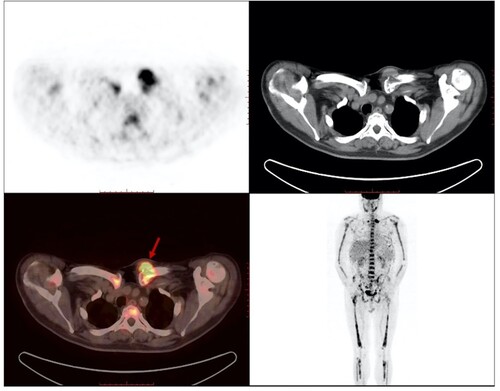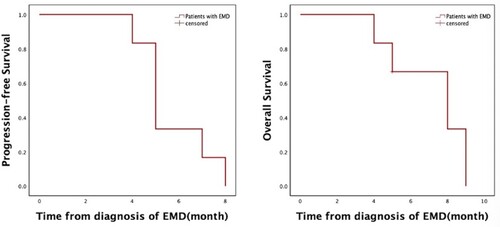Figures & data
Table 1. Patients’ characteristics.
Figure 2. Abdominal ultrasound showed reduction in hepatosplenomegaly and ascites after receiving pomalidomide based therapy. (A: At diagonisis of EMD; a: Several hypoechoic areas, largest 26*22 mm in size, were seen in liver; b: Splenomegaly, 125*51 mm; c: a dark area of fluid was seen in the abdomen, approximately 87 mm deep. B: After receiving pomalidomide based therapy for three months; d: Several hypoechoic intraheptic areas were smaller than before, the largest one was 18*16 mm; e: Splenomegaly was smaller than before, 113*48 mm; f: inferior abdominal fluid dark area was 65 mm in depth).

Figure 3. A: Patient 2 had para-osseous extramedullary soft tissues in the right mandible (6 cm ×5 cm), right neck (6 cm × 6 cm), left precordial area (5cm×4 cm), and right inferior rib (5 cm × 4 cm); B: His four soft tissue swellings had a significant reduction after pomalidomide based therapy.

Table 2. Treatment regimens and response to treatment.


